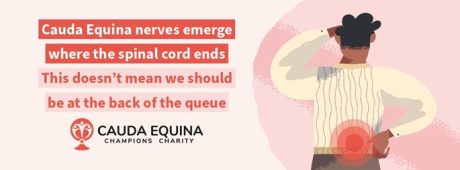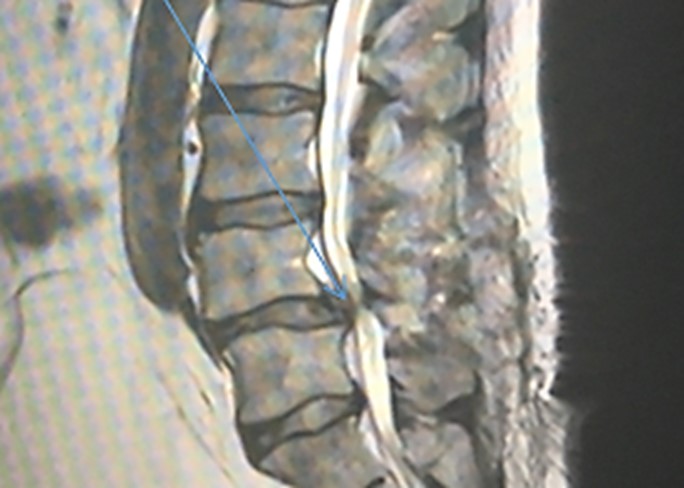Our client, BT, sustained a spinal cord injury arising out of substandard treatment of cauda equina compression in September 2017.
A claim was brought against a hospital trust and ambulance service, leading to a successful settlement for a seven-figure sum. Alison Goldney and Olivia Shaw review the case.
Background
In September 2017, BT experienced a sudden onset of lower back pain. The following morning, he was unable to get out of bed due to a combination of pain and altered sensation in his lower limbs. An ambulance was called, and BT was taken to hospital, where he was admitted.
Following a deterioration of BT’s symptoms, including the loss of leg function and urinary retention, BT was referred to a second hospital for an urgent MRI scan. An ambulance transfer was arranged, and BT arrived at the second hospital seven hours and 29 minutes after the priority one transfer was first requested.
An MRI scan was performed, and BT underwent lumbar decompression surgery from L3 to L5 due to a narrowing of his spinal cord (stenosis). Post-operatively, BT was catheterised as he continued to have urinary retention and was still in pain. In light of his neurological symptoms, the MRI scan was re-reviewed, which showed an L2/3 disc prolapse was causing the stenosis. BT required a further operation 24 hours later to extend the decompression to L2/3.
BT underwent spinal rehabilitation but continues to live with poor mobility and significant and debilitating neuropathic pain.
What is cauda equina?
Cauda equina syndrome occurs when the nerve roots in the lumbar spine are compressed, most commonly by an acute lumbar disc prolapse, cutting off sensation and movement.
The presentation depends on the level of this disc prolapse and the involvement of different roots. Nerve roots that control the function of the legs, bladder and bowel are especially vulnerable to damage. The time of the diagnosis and emergency treatment are essential in a cauda equina case. With early diagnosis and surgical management, individuals will typically have a full or near-full recovery.
The legal case
BT instructed Alison Goldney at Stewarts and Benjamin Bradley at Outer Temple Chambers. A claim was brought against the ambulance service in relation to the time in which he was transferred to the defendant hospital. The claim brought against the defendant hospital arose from a misidentification of the issue on BT’s MRI scan, which resulted in the spinal surgeons carrying out decompression surgery at the wrong level.
BT’s case is that had he been transferred to the defendant hospital in reasonable time, had his MRI been correctly interpreted and had surgery been performed at the right level in the first instance, his cauda equina would have been decompressed before he sustained permanent neurological damage.
The ambulance service admitted delay (caused by a breach of duty) amounting to four hours 41 minutes, and the defendant hospital admitted there was a breach in not performing the correct decompression. Both defendants denied causation of BT’s injury, asserting this had already occurred by the earliest point in time at which, in the absence of any negligence on the part of either defendant, appropriate decompression surgery should have taken place.
Following an unsuccessful joint settlement meeting, court proceedings were issued in August 2022. Directions were set for a trial to take place in October 2024 to determine liability and the value of the claim. Quantum expert evidence was obtained from consultants in spinal cord injuries, care/occupational therapy, physiotherapy, accountancy (to value the loss of income as the claimant was a self-employed tax advisor) and accommodation.
BT was recommended to undergo an assessment and trial of the AlterG Antigravity Treadmill and trials of the Keeogo Dermoskeleton and Exopulse Mollii Suit. The AlterG provides partial bodyweight support (up to 80%) while walking, running or performing weight-bearing exercises on a treadmill. The Keeogo Dermoskeleton is a bilateral powered knee orthosis with sensors at the hip to accurately time the activation of the motors at the knee to amplify user activity and improve walking, standing, stair climbing or rising from the floor. The Exopulse Mollii Suit is a sensory stimulation suit designed to provide a low-intensity electrical current to the entire body.
BT underwent these trials at the end of 2023. On the AlterG antigravity treadmill, he was able to work at a high exercise intensity without any increase in pain. He was also able to increase his unsupported walking speed. When wearing the Keeogo dermoskeleton, BT noticed some reduction in pain and an improvement in his ability to lower himself to one knee and return to standing, thereby improving his overall mobility. The Mollii Suit also improved BT’s pain and improved his performance in knee-to-floor tests.
Each recommended device had some beneficial effect on BT’s pain and/or function. The AlterG allowed him to exercise at an intense level, and the Keeogo provided him with greater support when he was walking, which would allow him to tolerate longer distances as well as support him when rising and using steps.
Settlement
A pre-issue joint settlement meeting was held in April 2022 but, unfortunately, was not successful. The major issue between the parties was BT’s future prognosis and, accordingly, the amount of his claim. BT’s experienced consultant in spinal cord injuries predicted a steady decline in BT’s later life, necessitating increased care needs. The defendant’s rehabilitation expert (who BT’s legal team argued did not have the requisite experience in managing patients with cauda equina syndrome) thought BT did not have many, if any, care needs and did not predict any decline in his condition in later life.
Despite BT’s significant pain issues, he had continued (in part out of necessity) to work part-time. The defendant’s legal team was complimentary of BT’s stoicism following his injury and commitment to seeking to make the best recovery possible.
Shortly after the joint settlement meeting, we made a seven-figure offer under Part 36 of the Civil Procedure Rules on BT’s behalf. This is known as a “Part 36 offer”, a formal offer to settle proceedings for a specified sum that can have costs consequences for the parties depending on whether it is accepted or declined. The defendant responded with a counter-offer of less than half that amount, which was rejected on the basis this would be an undervaluation of BT’s claim.
A second joint settlement meeting took place in May 2024. The litigation risks for both sides were discussed, including the potential cost penalties of the claimant’s Part 36 offer in April 2022, which remained on the table. If the damages awarded at trial in October 2024 exceeded this offer, it would have resulted in the defendant being liable for almost £1m in additional costs. A financial settlement was swiftly reached for a seven-figure sum close to the initial Part 36 offer.
This settlement has helped BT plan for his future and provide for his future care, therapy and accommodation needs.
Testimonial
BT says: “I’ve had great support from Stewarts throughout the process, and after receiving some really poor offers it was helpful to have the encouragement to see things through. In the early days since the settlement, I’ve been making plans to significantly wind down my work so I can spend more time doing the therapies that will help me.
“The Stewarts team has been amazing, they’re very friendly and easy people to get on with, everyone I’ve dealt with has been top class. The most important thing for me is that I had complete confidence in Stewarts, and whatever Alison recommended I was happy to do.”
You can find further information regarding our expertise, experience and team on our Clinical Negligence pages.
If you require assistance from our team, please contact us.
Subscribe – In order to receive our news straight to your inbox, subscribe here. Our newsletters are sent no more than once a month.






